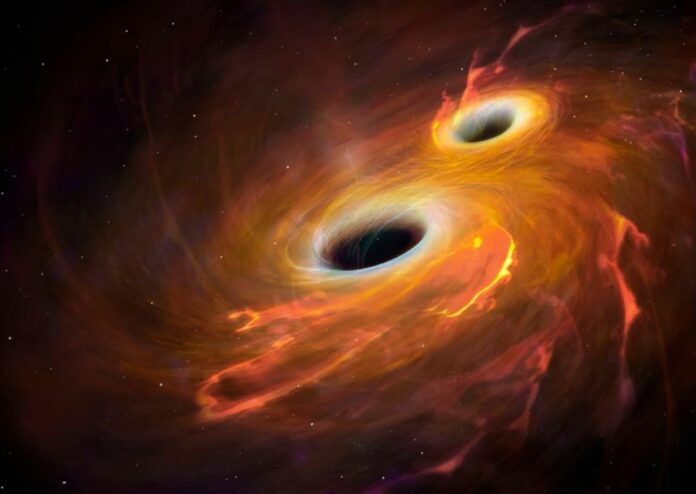Scientists observed gravity waves for the first time in 2015, which are ripples in space-time caused by big cosmic events such as the collision and merger of two black holes.
The discovery of these waves supported Einstein’s general theory of relativity, which predicted that such waves would emerge if space-time behaved as he thought it did.
Since then, by studying the gravitational waves that these alien occurrences release, almost 100 merging black holes have been found.
Now, thanks to research done by a group of 14 people led by Caltech PhD student and Columbia College alumnus Keefe Mitman (CC’19), Columbia postdoc Macarena Lagos, Columbia professor Lam Hui, and University of Mississippi professor Leo Stein, it is easier to model these cosmic events.
They were able to improve upon a previous model, which will lead to new insights on the composition of black holes when they eventually merge.
In a recent study titled “Nonlinearities in Black Hole Ringdowns,” the team describes a more intricate method of simulating the gravitational wave signal by integrating nonlinear interactions in the models.
In addition to testing the validity of Einstein’s general theory of relativity, this modeling approach will assist scientists get a deeper understanding of the underlying structure of events within black holes.
“This is a big step in preparing us for the next phase of gravitational wave detection, which will deepen our understanding of gravity and these incredible phenomena taking place in the far reaches of the cosmos,” adds co-author Lagos.
This study is well-timed, since the observatory that first discovered gravitational waves, LIGO, will be switched on in March to gather fresh data on events occurring in deep space.
Since the outbreak in 2020 forced the closure of the observatory, it has not been in operation. In the next years, a number of additional significant detectors are anticipated to begin data collection, making it even more crucial that they have advanced models to analyze incoming data.
Lam Hui, a co-author, used an analogy to explain what gravitational waves can tell us: By listening to the sound that is produced when a black hole is disturbed, they hope to get an understanding of its interior composition using these models. Black holes shake because of the disturbance that results from two objects slamming into one another and merging.
“By listening to the harmonics that it emits, we can assess the space-time structure of the black hole.”
Until present, only linear interactions have been incorporated in models of the gravitational waves released following a merger of two black holes, and these models have shown to be effective in revealing important details about the structure and contents of black holes.
Nonetheless, according to the authors of the research, this new model may give a 10% boost in black hole models’ overall accuracy.
The authors used an example of ocean waves to illustrate the significance of employing nonlinearity to explain gravitational waves: A linear equation might be used to explain a wave that rises and falls without gushing water into the air.
But, as wave crests and breaks, nonlinear interactions occur. Although some water fills the wave’s bottom, other water is concurrently crashing left, right, up, and down in tendrils and water droplets above it.
With a nonlinear model of the wave, you could figure out how and when all the water in the wave, including the droplets in the air, moves.
Gravitational waves are like water waves, and the new model can explain what extraterrestrial water droplets would be like.
“We’re getting ourselves ready for when we’re going to be gravitational wave detectives, when we’ll be digging deeper to understand everything we can about their nature,” adds author Stein.
Image Credit: Getty
